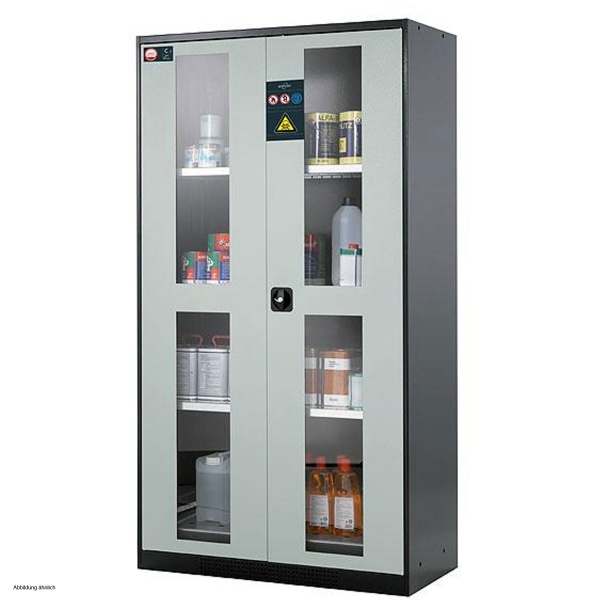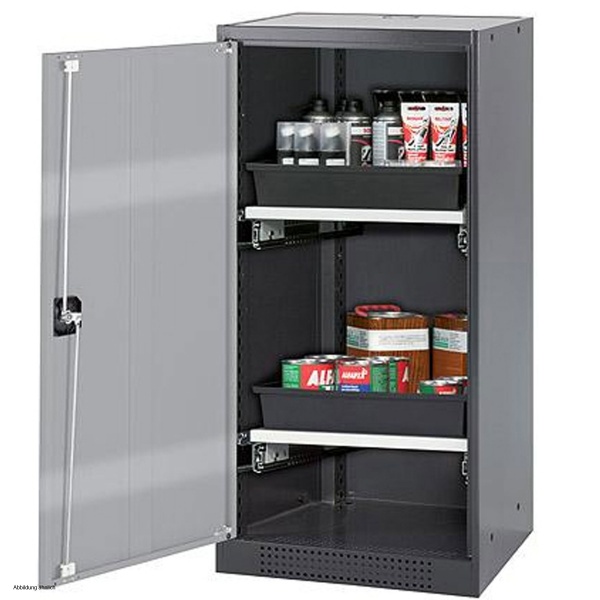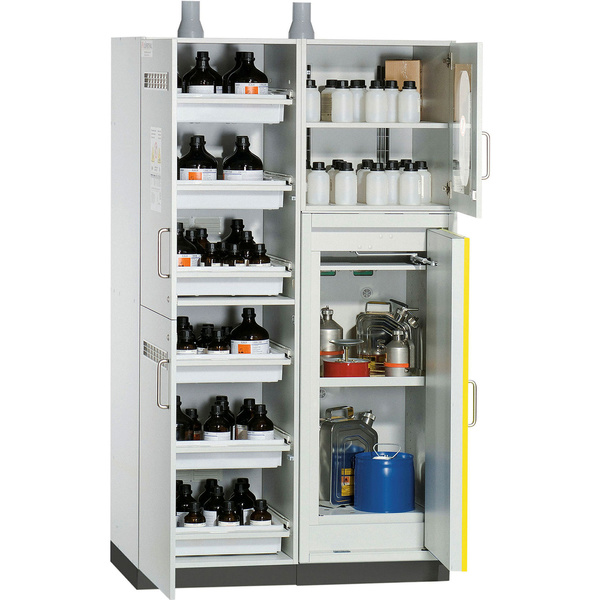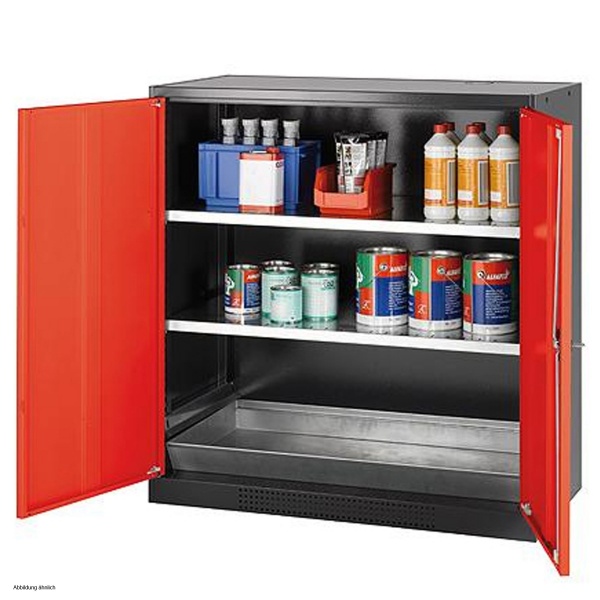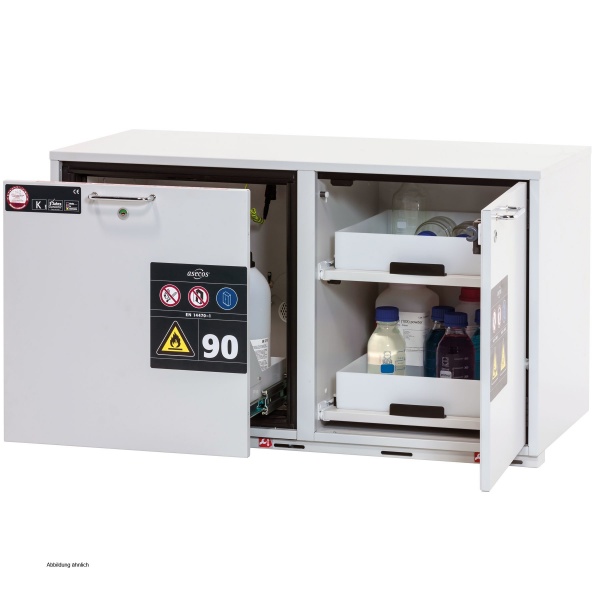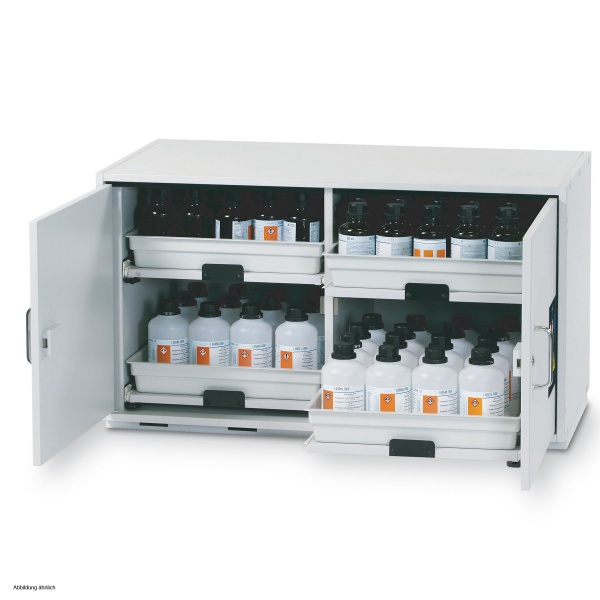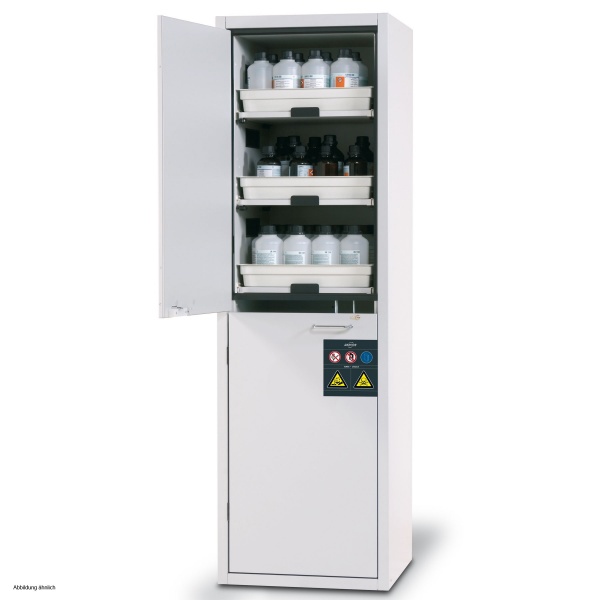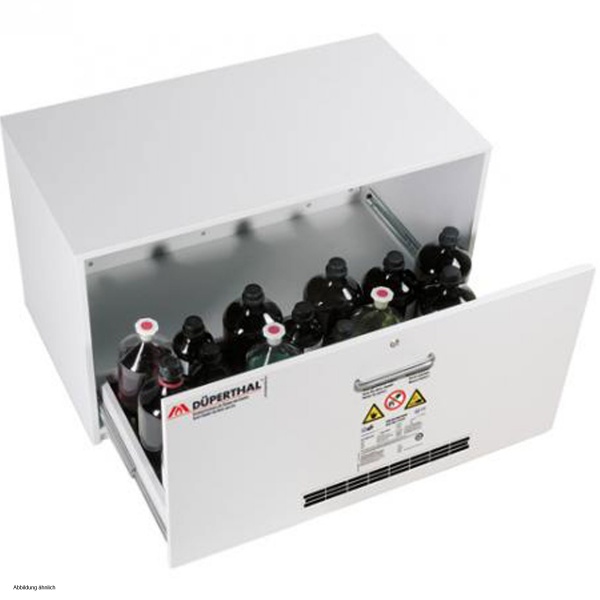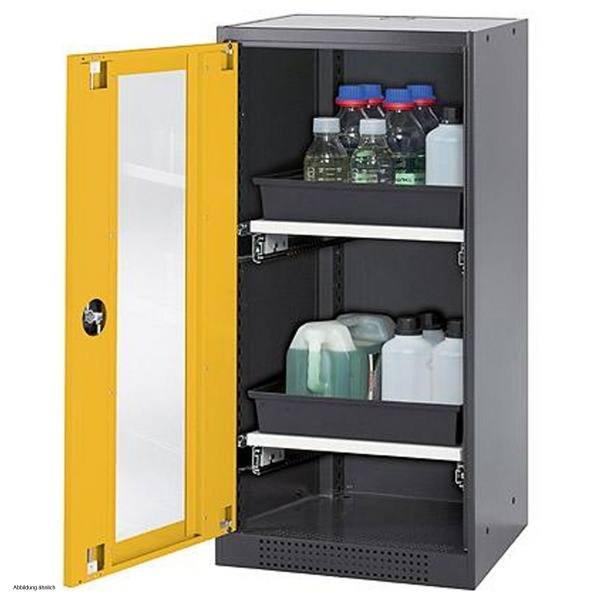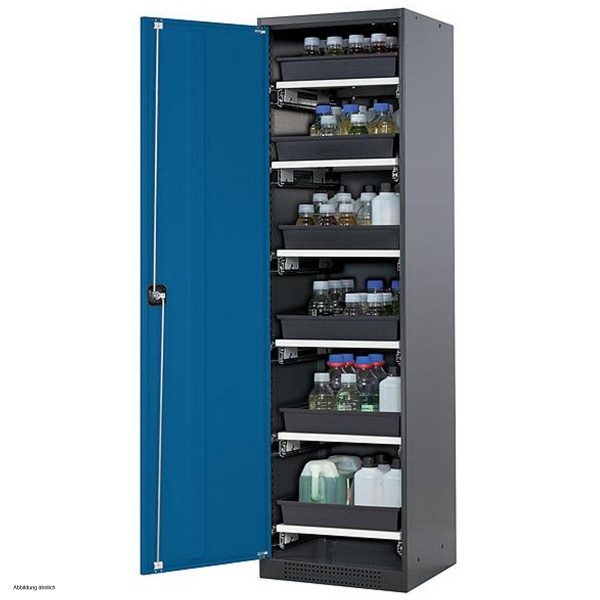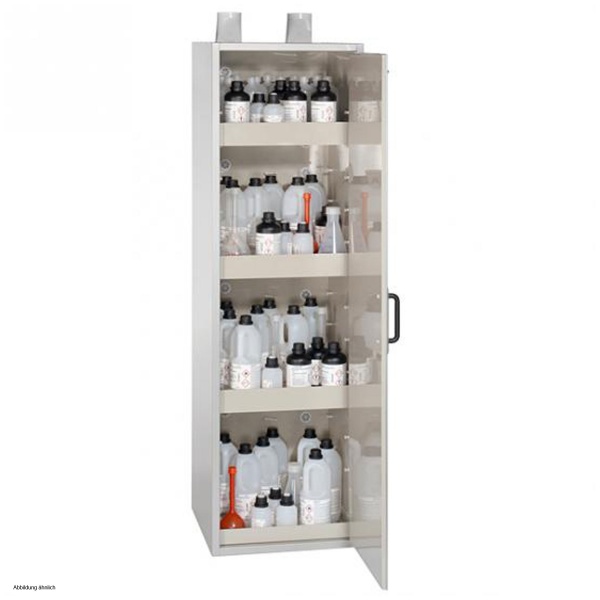Laboratory Safety Storage Cabinets
Manufacturer for Safety Storage Cabinets
Observe standards, guidelines and fire resistance classes
Our high-quality safety cabinets of the asecos and Düperthal Sicherheitstechnik brands are suitable for the safe storage of flammable chemicals or compressed gas cylinders. The safety cabinets must be installed in accordance with the applicable rules and regulations. With regard to the construction, design and testing, these requirements are mainly regulated in the European standards DIN EN 14470-1 and EN 14470-2 . Primarily, a safety cabinet is used for the safe storage of flammable liquids, gas cylinders, chemicals, solvents, acids and alkalis. The fire resistance protection is specified in classes (minutes): F15, F30, F60, F90. As a rule, safe cabinets consist of an inner carcass, fire protection insulation, valves for the supply and exhaust air with a fuse, fire protection seals on the doors with mechanisms/systems for forced closing and a connection for earthing.
Depending on the type of cabinet, there are also shelves or full pull-out drawers for storing the chemicals and additionally equipped with drip trays. Depending on the manufacturer and cabinet type, you will of course find accessories and spare parts in our portfolio. Chemical cabinets should be regularly checked for proper functioning and serviced if necessary. It is also advisable to train employees in the handling of chemicals, extinguishing agents and fire protection measures.
Requirements for a laboratory safety cabinet
The requirements for safety cabinets in laboratories, research facilities, industry, crafts, pharmacies, hospitals or public organisations that handle hazardous substances are subject to certain regulations. With regard to construction, design and testing, these requirements are mainly regulated in the standards DIN EN 14470-1 & EN 14470-2. Safety cabinets are primarily used for the safe storage of flammable liquids, gas cylinders, chemicals, solvents, acids and alkalis. To this end, the cabinet should primarily prevent the substances stored in the cabinet from promoting the spread of fire in the event of a fire and provide explosion protection(explosion protection).
The fire resistance protection is specified in classes (minutes): F15, F30, F60, F90. As a rule, the cabinets consist of an inner carcass, fire protection insulation, valves for the supply and exhaust air with a fuse, fire protection seals on the doors with mechanisms/systems for forced closing and a connection for earthing. Depending on the type of safety cabinet, there are also shelves or full pull-out drawers for storing the chemicals and additionally equipped with drip trays.
Safety cabinets for acids and alkalis are particularly corrosion-resistant cabinets. The fire protection classes of the cabinets are primarily designed for the storage of chemicals and other hazardous substances. The respective class indicates how long the unit protects the contents in the event of a fire: F15 safety cabinets protect contents for a minimum of 15 minutes; F30 safety cabinets protect contents for a minimum of 30 minutes; 60 safety cabinet protect contents for up to 60 minutes; and F90 cabinet secure your home or office from a fire with a protection time of up to 90 minutes.
Safety cabinets with or without technical ventilation
The ventilation of safety cabinets in laboratories or other places where hazardous substances are stored sometimes depends on the substances to be stored in the cabinet, the environment and air changes in the cabinet as well as in the workroom. A model with technical ventilation prevents the occurrence of a dangerous, explosive atmosphere inside the safety cabinet during normal operation. The exhaust air must be conducted to a non-hazardous location. As a rule, this is done by connecting to an exhaust air system that leads outdoors.
In the event of fire, a safety cabinet without technical ventilation shall protect the stored goods from inadmissible heat, ignition or explosive mixtures. To this end, there must be no ignition sources inside the cabinet. If this cannot be completely ruled out, measures must be taken in accordance with the risk assessment and Zone 2. A model without technical ventilation must be earthed via equipotential bonding.
Safety cabinets: Testing and regulations
If you store hazardous materials, you should ensure that you select a safety cabinet of the correct fire protection class for your needs. For example, if you store hazardous chemicals that pose a high risk of fire, you should consider buying an F90 safety cabinet, which will protect your contents for up to 90 minutes. Another important factor when it comes to workplace safety is to have your cabinets professionally inspected and maintained. Certain regulations apply to the maintenance and testing of laboratory safety cabinets and other safety equipment.
According to the Workplace Ordinance, rules for hazardous substances (TRGS 510) and DIN EN 14470, safety cabinets are subject to labelling , marking, mandatory testing and inspection intervals. For this purpose, fume cupboards and safety cabinets (for flammable liquids and compressed gas cylinders) must be regularly inspected by a competent person. The inspector should know the types, design and safety features of the cabinet. Only if the competent person knows what he has to check can a proper decision be made about the condition of the cabinet.
The inspection includes checking the condition of the fire protection valves, insulation, protective seals, hinges and the body for possible corrosion. Furthermore, the functionality of the door closing and locking must be checked and compliance with the explosion protection(Ex-protection) and, in the case of a model with technical ventilation, the air exchange rate / exhaust air volume flow must be measured. Only manual dexterity is required to replace the seals and hinges. An expert is called in to check the explosion protection; the air exchange can be checked by the maintenance department.
Laboratory safety cabinet - accessories
Our robust and durable safety cabinets from proven manufacturers are characterised by their high level of safety, simple installation and commissioning in the laboratory, as well as the functionality to replace individual components or add accessories. Depending on the model and type of the cabinet, you can order various spare parts and accessories for safety cabinets such as different vessel and bottle holders, drip trays, recirculation filters, ventilation modules, attachments with exhaust air monitoring and many other accessories for the offered safety cabinets.
You will find the safest cabinets on the market with us. Safety cabinets from the ProfiLab24.com range are manufactured according to thelatest safety standards and offer the highest quality at the best possible price.
Any questions? We will support you in choosing your laboratory equipment!
You are not yet sure which model is right for you? No problem! The ProfiLab24.com team of advisors is available around the clock to answer your questions. Together we will find exactly the right device for your requirements and thus enable you to work safely. Simply contact us by phone at +49 30 403 667 940 or by e-mail at [email protected].

